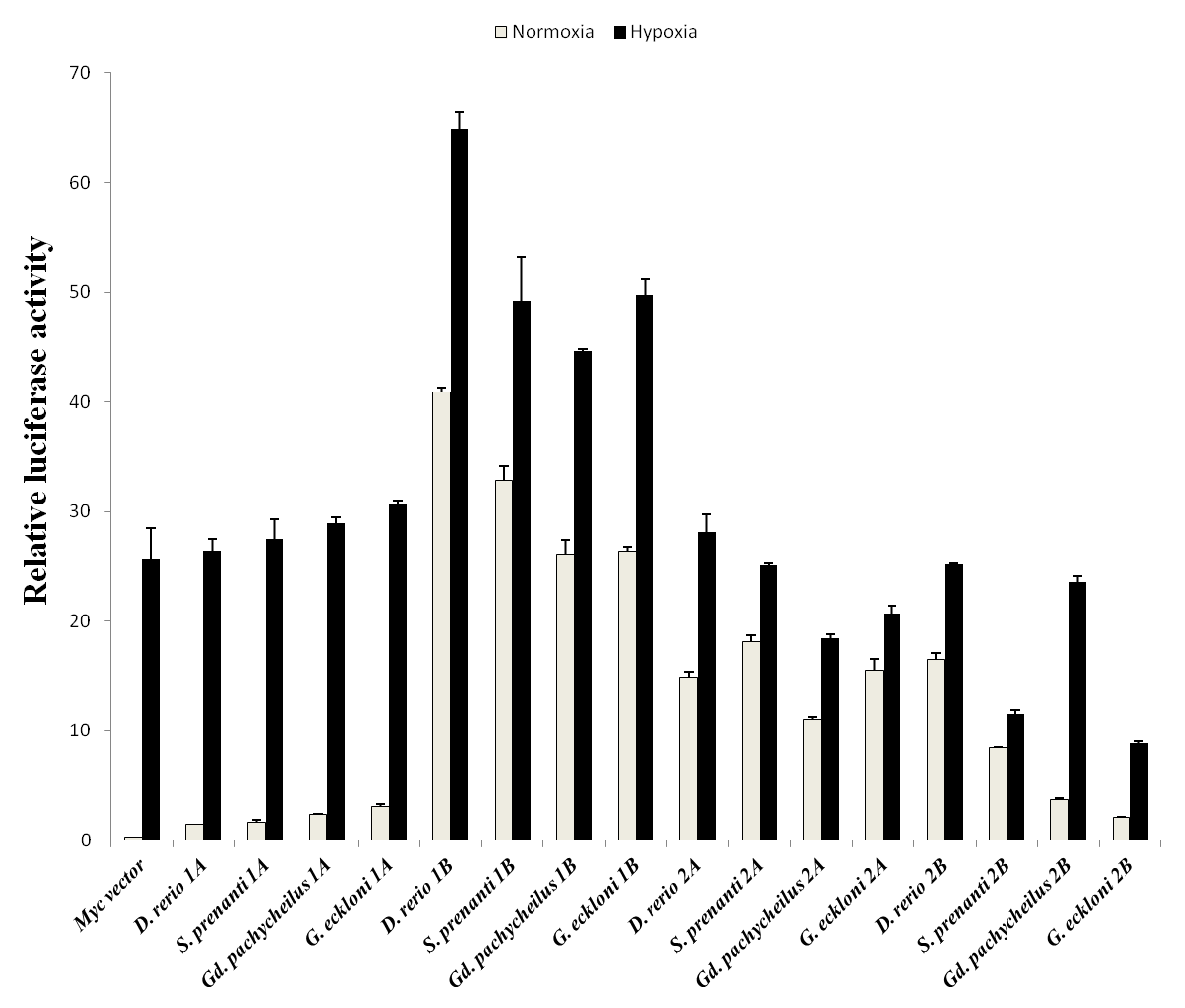
Newsroom
HIF-1αB Plays Important Role during Evolution of Schizothoracine Fish on Adapting to Tibetan Plateau
The schizothoracine fish (Teleostei: Cyprinidae) are the endemic and most diverse group of cyprinids distributed in the Tibetan plateau and its adjacent areas. They are divided into three groups (primitive, specialized, and highly specialized) according to the differences in their scales, pharyngeal teeth, and barbells. Previous analysis of the mitochondrial genome has demonstrated that schizothoracine fish are well-adapted to high altitudes and hypoxia, but less attention was paid to nuclear genes. Therefore, it is important to study how the nuclear genes affect the evolution of schizothoracine fish.
The research group led by Prof. He Shunping at Institute of Hydrobiology, Chinese Academy of Sciences performed a systematic evolutionary analysis on the duplicated hypxia-inducible factor alpha (hif-α) gene to explain how schizothoracine fish adapt to Tibetan plateau environment.
The researchers used PCR and RACE methods to amply duplicated hif-α genes. They identified hif-1αA, hif-1αB, hif-2αA, and hif-2αB in six species of schizothoracine fish for the first time. Each deduced HIF-α protein was found to have the same principal domains as its mammalian counterparts and had evolved specialized roles in the response to hypoxia. A specific deletion and mutation were detected in the ODD domain of HIF-1αA and HIF-1αB, respectively.
Meanwhile, by using codeml software in PAML, researchers detected significant selective pressure in HIF-1αB of the specialized and highly specialized schizothoracine fish. In addition, luciferase activity experiment revealed that the activity of HIF-1αB was highest under normoxia and hypoxia. It indicated that the HIF-1αB plays an important role in the adaptation of schizothoracine fish to the environment of the Tibetan plateau.
The results were published in BMC Evolutionary Biology with the title “Analysis of hypoxia-inducible factor alpha polyploidization reveals adaptation to Tibetan Plateau in the evolution of schizothoracine fish”.
This work was supported by the Pilot projects, the Key Fund and NSFC-Yunnan mutual funds of the National Natural Science Foundation of China.

Transcriptional activity of HIF-αs under normoxic and hypoxic conditions